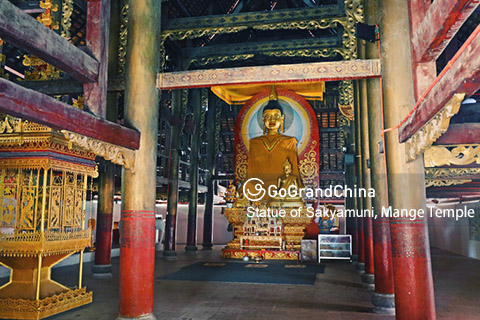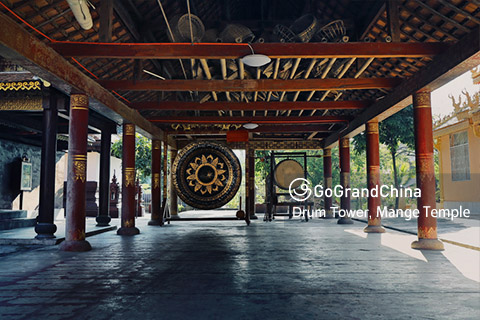You have no items in your shopping cart.
Mange Temple
Introducing Mange Temple
Mange Temple is one of the ancient Buddhist temples in Xishuangbanna. In the Dai language, Mange Temple is called “Wa Mange,” which means “Central Temple.” Completed in 1598 AD, the Theravāda temple graces the north bank of the Mekong River, its elegant structures encompassing over 1,300 square meters (0.32 acres). Within its modest walls, a rectangular layout unfolds from east to west, encompassing a main hall, scripture hall, monks’ quarters, drum hall, and a welcoming gate pavilion. These structures stand as a testament to faith and artistry, beckoning all who enter to find solace and inspiration.
Mange Temple Fast Facts
• Chinese Name: Man Ge Si 曼阁寺
• Best Time to Visit: October to next June
• Recommended Visiting Hours: 1 - 2 x hours
• Things to Do: Photography, Buddhism, Architecture
• Opening Hours: 08:30-17:00
• Entrance Fee: Free
• Address: 102 Central Alley, Jinghong City, Xishuangbanna Dai Autonomous Prefecture, Yunnan Province
What to Expect at Mange Temple
Mange Temple is currently considered the best-preserved and most valuable Buddhist temple in the area. It is enveloped by a tranquil natural setting, where elegant bamboo and towering magnolias stand alongside sacred bodhi trees. Mango trees and betel nut palms are woven through with bursts of color from sweet osmanthus, fuchsia, and morning glory flowers, enhancing the temple’s grandeur with their subtle charm.


The Ordination Hall
The Ordination Hall, known as “Bo Su” in the Dai language, is a significant symbol of the Mange Temple. This Dai-style building serves as a gathering place for the temple heads to chant, confess, and discuss religious matters. It is surrounded by ten Bodhi trees, providing ample shade. Inside the hall, there is a Sumeru throne that stands 1.7 meters high, featuring a 30-centimeter tall statue of Shakyamuni Buddha. Additionally, the entrance is marked by pillars adorned with two resting elephants, which symbolize holiness and inviolability.
How to Get to Mange Temple
• By Bus: Take Jinghong Tourist Bus 3 to Kunman jiancezhan Station.
Additional Travel Advice on Mange Temple
• Please wear sunscreen, hat and sunglasses to prevent UV.
• The weather is changeable. It is suggested to take an umbrella or raincoat with you.
There are no products matching the selection.

